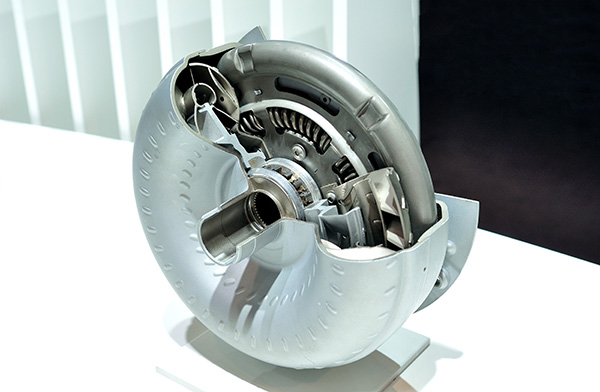
When you drive a vehicle with an automatic transmission, there’s a complex system at work behind the scenes making everything feel smooth and seamless. One of the most important components in that system is the torque converter. It plays a critical role in helping your car move without needing a manual clutch—and if it stops working properly, you’ll feel it.
So, what exactly is a torque converter, and what does it do? Here’s a clear explanation that helps you understand how this part affects your driving experience—and why it matters if you ever run into trouble.
The Torque Converter Replaces the Clutch
In a manual transmission, you press the clutch pedal to disconnect the engine from the transmission so you can change gears. Automatic transmissions don’t use a clutch—instead, they rely on the torque converter to handle that connection. It allows the engine to spin even when the car isn’t moving and smoothly transfers power to the transmission when you accelerate.
The torque converter sits between the engine and the transmission and uses hydraulic fluid to transfer engine power to the transmission. It enables your vehicle to idle in gear without stalling and gives you that smooth, automatic feel when shifting from stop to go.
How It Works
Inside the torque converter are three main components: the impeller, turbine, and stator. Here’s a simple breakdown:
The impeller, driven by the engine, spins and pushes transmission fluid outward.
That fluid hits the turbine, which is connected to the transmission. The force of the fluid spins the turbine, transferring energy to move the vehicle.
The stator sits between them and redirects the returning fluid to improve efficiency and torque output—especially at lower speeds.
As engine speed increases, the torque converter multiplies torque, helping the car accelerate more easily from a stop. Once cruising speed is reached, a lock-up clutch inside the converter engages to create a solid connection between engine and transmission—boosting efficiency and fuel economy.
Why It Matters for Daily Driving
A properly functioning torque converter means your car feels smooth at stoplights, during acceleration, and when cruising. When it’s working right, you probably never notice it. But when it starts to fail, you may begin to experience some unusual behavior—like shuddering, hesitation, or odd noises during shifting.
Because the torque converter is filled with transmission fluid and relies on hydraulic pressure, any issues with fluid levels, contamination, or internal wear can affect how it performs.
Signs of a Failing Torque Converter
If your torque converter is having trouble, you might notice symptoms such as:
- Slipping gears or delayed engagement when shifting from park into drive
- Shuddering during acceleration or while maintaining a steady speed
- Unusual noises, like whining or clunking, especially at lower speeds
- Poor fuel economy, as the converter fails to lock up efficiently at cruising speeds
- Overheating transmission, caused by internal fluid friction or breakdown
Many of these symptoms can also point to other transmission issues, which is why a proper diagnosis is so important.
Can It Be Repaired or Does It Need Replacing
Some torque converter problems can be addressed with a transmission fluid flush—especially if the issue stems from dirty or degraded fluid. But if the internal parts of the converter are damaged, a rebuild or full replacement may be necessary.
Because the torque converter is inside the transmission housing, replacing it often requires removing the transmission itself. That makes it a labor-intensive job but one that’s worth doing right to avoid ongoing drivability issues.
Willy’s Transmission & Air Conditioning – Torque Converter Experts in Kaneohe, HI
At Willy’s Transmission & Air Conditioning in Kaneohe, HI, we specialize in diagnosing and repairing torque converter issues in all types of automatic vehicles. If your car is slipping, shaking, or just not shifting like it used to, our team can run the right tests and find out if the torque converter is to blame. Bring your vehicle in for a thorough inspection and keep your transmission running strong.